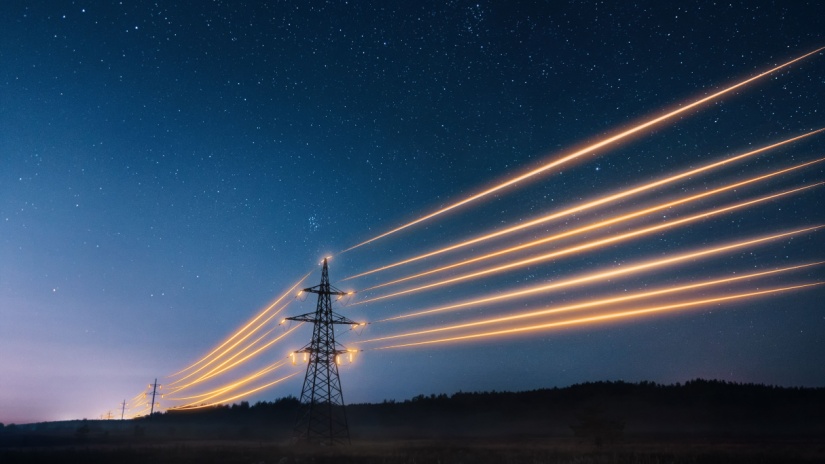Knowledge Centre
How do I find out who my energy supplier is?

Gas and electricity suppliers differ from state to state, and while you can often find the same company supplying you from house to house, the offers on the table may be different.
But did you know that there is a difference between the retailer you pay your energy bills to and the distributor of the energy you use?
Let’s dive in and talk about it.
What is an energy supplier?
An energy supplier, also known as a utility provider, energy retailer, or power company, is the entity that invoices you for your electricity usage and connection to the energy grid. These suppliers typically send bills to customers on a monthly or quarterly basis.
In Australia, there are over 30 electricity suppliers operating in areas with a deregulated energy market. This means that in most states and territories, or regions within a state, private companies can enter the market and sell electricity to households and businesses.
What is the difference between a retailer and a distributor?
Energy retailers act as middlemen in the energy market, buying electricity from the grid and then selling it to customers at prices that are usually higher.
You may be paying AGL for your gas and electricity, but AGL doesn’t produce the gas or transmit the electricity you use. Instead, this comes from an energy distributor and the distributors and then energy companies offer it to consumers through different energy plans.
There are a number of differences between an energy retailer and an energy distributor and we’ve got a handy table to help you to distinguish the two:
| Aspect | Energy Distributor | Energy Retailer |
| Infrastructure | Builds and maintains power poles, wires and infrastructure | Builds and maintains individual power connections of properties |
| Network Maintenance | Repairs damage to the electricity networks | Repairs local electrical faults not part of the greater power grid |
| Meter Reading | Reads energy meters and sends information to the retailer | Issues your power bill based on or estimated from readings |
| Pricing | Sells power to energy retailers at wholesale prices | Sells energy to consumers at retail prices through power plans |
Australia’s energy distributors
Your energy distributor is assigned based on your location, and you don’t get to choose it. A distributor is responsible for specific regions, so the one serving your area is determined by where you live.
Let’s take a look at a list of the distributors by state:
Electricity distributors
New South Wales
| Distributor | Location | Customers (approx.) |
| AusGrid | Greater Sydney, Newcastle and the Central Coast, Muswellbrook and Merriwa | 1.7 million |
| Endeavour Energy | The Blue Mountains, Greater Western Sydney, Southern Highlands, Illawarra, South Coast | 2.4 million |
| Essential Energy | 95% of NSW rural areas, plus some of South West QLD | 865,000 |
Victoria
| Distributor | Location | Customers (approx.) |
| Jemena | North and South West Melbourne | 350,000 |
| CitiPower | Melbourne CBD and inner suburbs | 1.1 million |
| AusNet Services | Eastern Victoria, northern and eastern suburbs of Melbourne | 2.1 million |
| United Energy | Southern Melbourne and Mornington Peninsula | 660,000 |
| Powercor | Western Victoria, excluding Melbourne | 1.1 million |
Queensland
| Distributor | Location | Customers (approx.) |
| Energex | South East QLD, including Brisbane, Gold Coast and Sunshine Coast | 1.4 million |
| Ergon Energy | Rural and regional QLD | 740,000 |
South Australia
| Distributor | Location | Customers (approx.) |
| SA Power Networks | All of South Australia | 900,000 |
Australian Capital Territory
| Distributor | Location | Customers (approx.) |
| EvoEnergy | The vast majority of the ACT | 160,000 |
Tasmania
| Distributor | Location | Customers (approx.) |
| TasNetworks | All of Tasmania | 295,000 |
What about WA and NT?
In Western Australia and the Northern Territory, the electricity markets are not competitive, and prices are regulated. This means that residents in these areas do not have the option to choose their energy retailer.
As a result, there is less need to actively engage with your energy supplier, as the prices are set, and you are unlikely to pay more than necessary for your electricity.
Gas distributors
New South Wales
| Distributor | Location | Customers (approx.) |
| Central Ranges System | Tamworth | - |
| Jemena Gas Networks (NSW) | Sydney, Newcastle and Central Coast, Wollongong and parts of country NSW | 1.4 million |
| Wagga Wagga Gas Distribution Network | Wagga Wagga | - |
Victoria
| Distributor | Location | Customers (approx.) |
| Australian Gas Networks | Northern, Eastern, Southern areas of metropolitan Melbourne, Mornington Peninsula, Northern, Eastern and Southern areas of Victoria | 1.3 million |
| Multinet Gas | Melbourne's inner and outer East, the Yarra Ranges, South Gippsland | 680,000 |
| AusNet Services | Western Melbourne, Central and Western Victoria | 665,000 |
Queensland
| Distributor | Location | Customers (approx.) |
| AllGas Energy | Southern suburbs and Mornington Peninsula | 78,000 |
| Australian Gas Networks | Brisbane region (Brisbane CBD, north of the Brisbane River and Ipswich), and Northern Regions (Rockhampton and Gladstone) | 650,000 |
South Australia
| Distributor | Location | Customers (approx.) |
| Australian Gas Networks | South Australia | 1.2 million |
Tasmania
| Distributor | Location | Customers (approx.) |
| Tas Gas Networks | All of Tasmania | 70,000 |
How to find out who your suppliers are
It’s not hard to find out who your electricity and gas suppliers are in Australia. To find out who your energy suppliers are in Australia, you can follow these steps:
Check your bill
Even if you’ve just moved into a new property or building, you should get a welcome letter from a local energy supplier. Look at your recent electricity and gas bills to see who it is that supplies your property - it should include the name of your energy retailer.
Speak to your real estate agent or landlord
If you're renting, your landlord or real estate agent should be able to provide you with information about your energy suppliers so that you can get connected from when you first move in. This way, no sneaky bills will creep up on you later on.
Contact the distributor
Now that you know who the distributors are for gas and electricity in your state, you could contact them directly and ask who they use as a retailer.
Why it’s important to know who your energy supplier is
There are several reasons to get to know who your energy suppliers are. From knowing who you should be paying your energy bills to and who you should contact if you have a question, knowing your supplier is also going to help you to determine if you are on the right plan.
Different energy suppliers offer different tariffs and rates. Knowing your supplier can help you understand your pricing structure and compare it with other providers to ensure you're getting the best deal.
It may also help to understand who’s in charge in your area when the power goes out. If you know who your supplier is, you can get help and know to whom you should report any issues or outages.
Looking to switch suppliers?
Have you found out who your energy supplier is but you’re not happy with what’s on offer? It should be easy to manage your energy consumption, understand your bills, and ensure you're receiving the best service and rates possible.
If you don't think you’re getting the best service, contact the team at Compare Energy. We’ll help you to get connected to the right supplier in your state.

